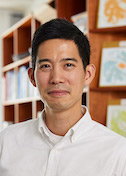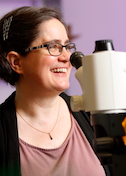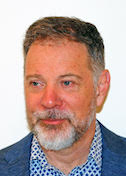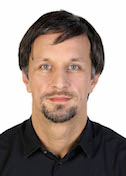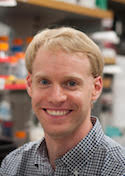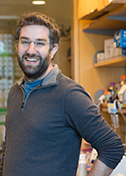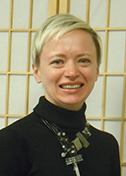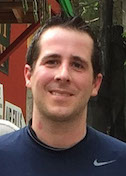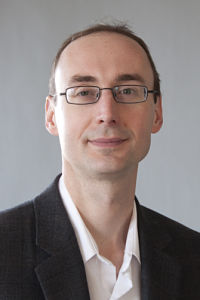Gone Viral
Olve Peersen
Colorado State University
Published March 20, 2014
After studying membrane proteins in an NMR lab as an undergraduate at Carnegie Mellon University, Olve Peersen went to Yale for graduate school. The year was 1988, the heyday of crystallography at Yale, yet Peersen, for the most part, steered clear of it. "I was focused on membrane proteins and NMR, and perhaps a bit brainwashed," he says.
But the brainwashing didn't last. In fact, Peersen, who is now professor of biochemistry and molecular biology at Colorado State University, eventually found crystallography and uses it and several other tools (though not NMR) in his lab today.
During graduate school, Peersen worked with Steven Smith doing solid state NMR. The work involved advances in rotational resonance NMR. He was working with frozen samples of membrane proteins and spinning them around the magic angle to measure carbon-carbon distances and map out structural interactions.
The sample he was working with had strong couplings, and the resulting NMR resonances were very broad, so he had to spin the sample faster and faster. "We were spinning at 14,000 revolutions per second," he says. "The outside of the sample actually went super-sonic."
The trouble was, at those speeds, cross polarization methods didn't work very well, so Peersen developed a new method, called variable amplitude cross-polarization. To validate the method, which is in routine use today, he would solve the structure of a peptide using crystallography, then spin it in the NMR magnet. "It was a direct comparison using exactly the same sample," says Peersen.
Soon after, Peersen left the NMR field. He joined the laboratory of Joseph Falke at the University of Colorado, Boulder, as a post doc working on calcium binding thermodynamics and kinetics. He studied calmodulin, a calcium sensor in cells that binds with multiple enzymes. The enzymes, by virtue of their structure, encode the duration of the activated complexes with calmodulin. "It was a structure driven biochemistry approach, which I'm big on," says Peersen. "It's not just solving the structures, but also putting them to use to understand the biochemistry."
Peersen then moved to a crystallography lab, working with Steven Schultz, also at Boulder, on a telomere binding protein. When Schultz decided to leave academic research, Peersen carried this project with him to his own lab at Colorado State. He also took another project, that of solving the structure of the poliovrus polymerase.
That project sat in the freezer for a couple of years before he pursued it by making a point mutation to intentionally disrupt a stubborn, intriguing, and problematic crystal packing interface. Peersen's lab solved the structure in 2004, and then in 2010, solved a stalled elongation complex of the polymerase with RNA.
These structures gave Peersen insight into how these single-stranded RNA viruses work. For instance, the conformational changes in the RNA polymerase complex occurred in the palm domain rather than the fingers, as in many other replicative polymerases. Peersen hypothesized that these conformational changes might influence the evolution and survival of these viruses. "What I find really exciting is that it's truly a structure-function relationship that has huge implications for quasispecies distributions and virus growth," says Peersen, who joined SBGrid in 2009.
The viruses reproduce en masse with many small mutations, some of which help them survive and travel in a host, as the poliovirus does when it spreads from the gut to the central nervous system. One of the features that both evolves and drives evolution is replication fidelity, which, for example, is very low for poliovirus, and but relatively high for the very similar coxsackievirus polymerase.
In recent work, Peersen and collaborating virologists engineered the fidelity of the coxsackievirus to be as low as that of the poliovirus. The change prevented the spread of the virus in vivo. "When these viruses are evolving, the right window of fidelity is really important," says Peersen, who is now exploring whether these findings could be applied to aid the development of new vaccines.
-- Elizabeth Dougherty







